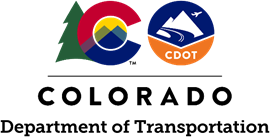Widgetized Section
Go to Admin » Appearance » Widgets » and move Gabfire Widget: Social into that MastheadOverlay zone
CDOT says more rain could shut down I-70 through Glenwood Canyon
June 29, 2021, 10:25 am
Mudslides in last summer’s Grizzly Creek Fire burn area in Glenwood Canyon have been periodically shutting down Interstate 70 since rain started falling in the area last weekend. While I-70 was open as of Tuesday morning, Colorado Department of Transportation (CDOT) officials are warning travelers to expect more rain and more possible closures.
Here’s a CDOT press release issued Tuesday morning, June 29:

Motorists should be prepared for a potential closure of Interstate 70 through Glenwood Canyon due to heavy rainfall that could trigger flash floods, mudslides, rockfall or other hazards to travelers. CDOT has closed the Grizzly Creek and Shoshone Power Plan rest areas and the Glenwood Canyon recreation path due to a Flash Flood Advisory for the Grizzly Creek burn scar. CDOT will be on standby, with the same procedures as during a Flash Flood Watch. If a Flash Flood Warning is issued for the Grizzly Creek burn scar, CDOT will close I-70 in Glenwood Canyon and clear the canyon of traffic. If there is an I-70 closure that is anticipated to last longer than an hour, CDOT will ask that motorists use the recommended northern alternate route.
ENCOUNTERING INCLEMENT WEATHER
If you are stuck in a closure waiting for a road to be cleared of mud or rocks, do not leave your car unless absolutely necessary. Never hang out in the grassy median located between lanes. If traffic is moving in the opposite direction, the median can be a hazardous area. Emergency response vehicles and heavy equipment may also need the median area to move about and access the emergency scene.
Lengthy closures on the interstate may also be the result of staged releases. As stopped traffic backs up, creating long lines, traffic will be let go in stages, allowing traffic queues ahead to clear, before releasing more traffic.
BE PREPARED
Highway closures can last for as little as a few minutes or for as long as several hours. When drivers set out on a trip, especially through high country roads or the I-70 mountain corridor, it would be wise to have the car supplied with an emergency kit. The kit should contain at the very minimum: water, snacks, flashlight, and a blanket. Remember to also carry water for your pets if you’re traveling with animals. You may even consider packing some items to keep you or children occupied while waiting in the car. Activity books, colored pencils or a deck of cards can help pass the time.
DRIVER SAFETY
When motorists drive up onto a flooded area, there are several precautions to follow.
- Never drive through any flooded area, you do not know how deep or how fast the water is running.
- Even 8-10 inches of water can float an average-sized car, which can be easily swept off the road.
- Driving too fast on wet roads or in flooded areas can cause a vehicle to hydroplane. Never use your cruise control during rainy conditions with standing water on the roadway.
- Any amount of flooding or mud can obstruct the roadway and hinder drivers from knowing exactly where to drive. If you cannot see the roadway, be smart and wait for the water to subside.
- Water and mud can contain unknown hazards hidden under the surface – rocks or other debris, like plant material and tree branches.
KNOW BEFORE YOU GO
Travelers are urged to “know before you go.” Gather information about weather forecasts and anticipated travel impacts and current road conditions prior to hitting the road. CDOT resources include:
- CDOT webpage: www.codot.gov
- CDOT safe driving tips: www.codot.gov/travel/driving-safety and downloadable flyer
- CDOT’s official and only road conditions website: www.COtrip.org
- CDOT project or travel alerts: bit.ly/COalerts
- CDOT social media: Twitter @coloradodot and Facebook facebook.com/coloradodot
- Tune in to your preferred weather source
Recent Posts
- Bennet reportedly poised to enter governor’s race, but Weiser says he’s still ‘all in to fight for Colorado’ in 2026
- Eagle County commits $5 million toward preserving East Vail open space
- Vail Health receives two Press Ganey Human Experience Guardian of Excellence Awards
- Avon to launch free SunsetLIVE! concert series on Sunday, May 25
- Trump anti-immigrant policies add to Latino mental health crisis in Colorado ski towns
- Battle Mountain Huskies to resume football in fall of 2025
- U.S. 6, Post Boulevard roundabout project to resume work April 21
- Egg Hunt Extravaganza returns to Avon on Saturday, April 19
- Amid media ‘frenzy’, I-70 truck by train backer touts plan at Denver rail show
- Vail Town Council appoints Courtney Holm as new Vail Municipal Judge


